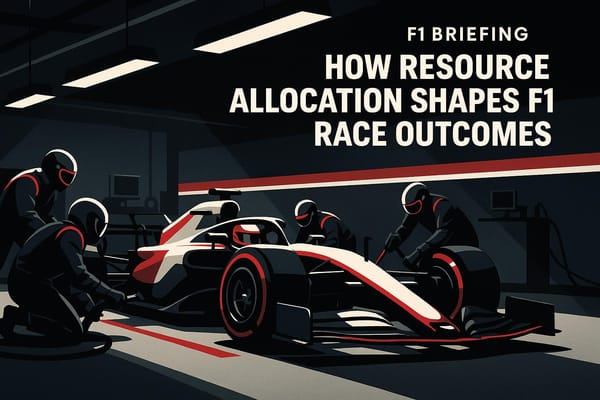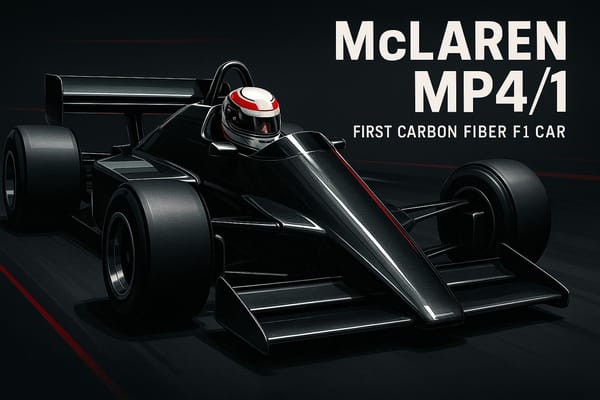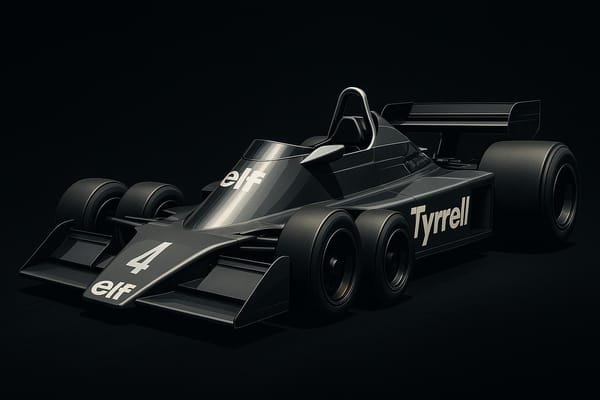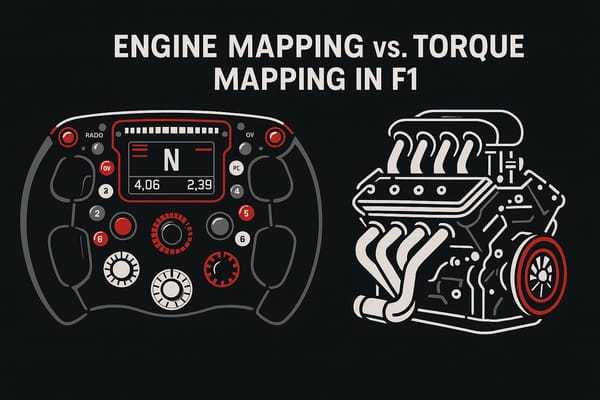Qualifying Pace vs Race Pace: Key Differences
Explore the critical differences between qualifying pace and race pace in Formula 1, highlighting their impact on strategy and performance.
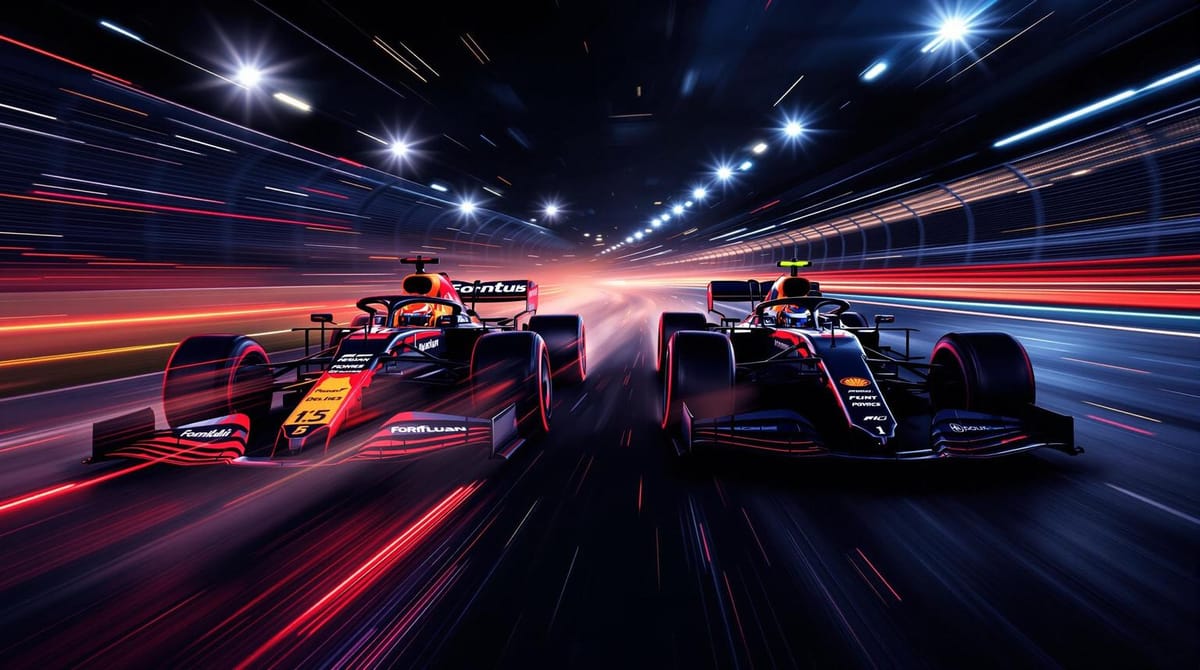
What’s the difference between qualifying pace and race pace in Formula 1? Here’s the quick answer: qualifying pace is all about achieving the fastest single lap, while race pace focuses on consistent performance over a full Grand Prix. Qualifying setups prioritize speed with minimal fuel, fresh tires, and maximum engine power. Race setups, on the other hand, are designed for endurance, managing tire wear, heavier fuel loads, and evolving track conditions.
Key Points:
- Qualifying Pace: Maximum performance for one lap with low fuel, soft tires, and aggressive engine settings.
- Race Pace: Consistent speed over a race with full fuel tanks, tire management, and strategic adaptability.
- Setup Differences: Qualifying setups favor speed, while race setups prioritize stability and long-term performance.
Quick Comparison Table:
| Factor | Qualifying Pace | Race Pace |
|---|---|---|
| Fuel Load | Minimal (3-4 laps worth) | Full tank for the entire race |
| Tires | Softest compounds for grip | Harder compounds for durability |
| Engine Mode | Maximum power for short bursts | Balanced for efficiency |
| Driver Approach | Aggressive, pushing limits | Conservative, managing resources |
| Aerodynamics | Lower downforce for speed | Higher downforce for stability |
In short, qualifying is about raw speed, while racing is about strategy and endurance. Keep reading to explore how teams balance these setups for success.
F1 CRASH COURSE | Quali Pace vs Race Pace | What are the Differences?
What Is Qualifying Pace
Qualifying pace represents the peak performance a Formula One car and driver can achieve under ideal conditions. This involves minimal fuel, fresh tires, and the engine operating at its maximum output. Unlike the race itself, qualifying is all about extracting every fraction of a second from a single flying lap.
"Qualifying in Formula 1 is the only time during a hectic race weekend where you know that every driver is straining to the very limit of their ability to set the fastest possible lap time, in pursuit of a high grid slot for the following day's race." – Motor Sport Magazine
The intensity of qualifying often means the difference between pole position and mid-pack can be decided by mere hundredths of a second. A prime example is Lewis Hamilton’s record-breaking lap at Monza in 2020, where he clocked 1:18.887, averaging a blistering 164.36 mph - the fastest official lap in Formula One history.
Let’s dive into the factors that make this peak performance possible.
Features of Qualifying Pace
Achieving maximum qualifying pace requires a combination of several key elements. One critical factor is the fuel load. Teams minimize fuel to just enough for an out-lap, a flying lap, and an in-lap, significantly reducing the car’s weight and improving speed.
Tire selection is another essential component. Drivers often save the softest tire compounds for the final session, as these provide the most grip for short bursts, though they wear out quickly and are unsuitable for long stints during the race.
Power unit settings are also cranked to their highest performance levels during qualifying. This maximizes horsepower without worrying about long-term reliability or fuel efficiency. Additionally, car setups are fine-tuned specifically for a single lap, with adjustments to downforce, suspension, and aerodynamic balance. Once cars leave the pit lane for Q1, parc fermé rules lock in these setups for the rest of the weekend.
The 2023 season highlighted how these trade-offs can play out. Ferrari’s SF-23, for instance, excelled in one-lap qualifying speed and frequently challenged for pole positions. However, the car’s tendency to wear out tires quickly during races often led to lost positions.
How Qualifying Sessions Work
The structure of Formula One qualifying also shapes how teams and drivers approach their laps. The current format uses a three-stage knockout system, which not only determines the starting grid but also adds an extra layer of strategy and drama. Each stage has specific time limits and elimination criteria that influence decisions.
Q1 lasts 18 minutes and eliminates the five slowest drivers, leaving 15 to advance to Q2. Many teams use medium or hard tires in this session to save the softer compounds for later. Additionally, the 107% rule applies here, requiring all drivers to set a lap within 107% of the fastest Q1 time to qualify for the race.
Q2 runs for 15 minutes, with another five drivers eliminated. This leaves the top 10 drivers to compete in Q3. Teams must carefully balance the need to secure a strong position with conserving tires for the final session.
Q3 is the ultimate showdown, giving the top 10 drivers 12 minutes to fight for pole position. With limited time, most drivers complete just two flying laps. Teams often send their drivers out early to secure a "banker lap" before returning to the pits for fresh tires and a final attempt at the fastest time.
In 2023, Formula One tested an alternative tire strategy during qualifying at the Hungarian and Italian Grands Prix. Teams were required to use hard tires in Q1, medium in Q2, and soft in Q3, unless wet conditions intervened. This added another layer of complexity to the sessions.
Track evolution also plays a significant role. As more cars lay down rubber, the surface grip improves, meaning timing runs to align with the best track conditions is critical. However, drivers must also avoid slower traffic, which can disrupt their hot laps.
"F1 qualifying blends speed, strategy, and sheer determination." – Amanda Clark
This knockout format leaves no room for error - one misstep can mean losing multiple grid positions.
What Is Race Pace
Race pace refers to the steady speed a driver maintains throughout a Grand Prix. Unlike the all-out sprint of qualifying, race pace requires balancing lap times with managing tire wear, fuel consumption, and overall strategy.
"Race pace is the term used for the lap time which can be consistently achieved by a car/driver in race conditions as opposed to a short qualifying run." – Chris Johns, Set Designer/Artist
The key challenge in race pace is juggling multiple variables. As the race progresses, the car's weight decreases due to fuel burn-off, often leading to faster lap times - sometimes improving by 3–7 seconds compared to the opening stint. This evolving dynamic forces teams to continuously adjust their strategies while drivers adapt their approach to the changing conditions.
Unlike qualifying, which is all about delivering one perfect lap, race pace revolves around consistency. Drivers often hold back early on, preserving their tires for later stints, rather than chasing marginal gains that could compromise their long-term performance. Now, let’s dive into the factors that shape race pace.
Factors That Affect Race Pace
Several elements influence a driver’s ability to maintain consistent lap times during a race, with tire degradation being one of the most critical. In qualifying, fresh tires offer maximum grip, but during the race, managing tire wear over longer stints becomes essential.
Temperature plays a huge role in tire performance. Simone Berra, Pirelli's chief F1 engineer, explains:
"The working range is the window of temperature where the tyres generate the maximum grip. If the tyres are too cold, the rubber compound can become stiff. If it is too hot, its modulus decreases and the tyres degrade. Both cases lead to lower grip".
Fuel load is another crucial factor. At the start of the race, cars are heavier due to a full fuel tank, which impacts lap times. Teams often use a fuel correction factor of about 0.03 seconds per kilogram of fuel to account for this added weight.
Track conditions also evolve over the course of the weekend and even during the race. As more rubber is laid down, grip levels improve - a phenomenon known as track evolution. This can alter the optimal racing line and grip levels significantly.
Traffic and overtaking opportunities further complicate race pace. Even if a driver has the raw speed to achieve faster laps, getting stuck behind slower cars can require strategic adjustments.
Eric Blandin, deputy technical director at Aston Martin, highlights the importance of tire compound choices in shaping race strategy:
"Soft compounds are easier to warm up and to reach their optimum temperature, so are better suited to cool conditions and smooth tracks with less high-speed corners. Whereas hard compounds are more robust and so can generate grip at tracks with high surface temperatures and roughness, without overheating or damaging the surface of the tyre".
Ultimately, success in race pace hinges on making small, precise adjustments to maintain performance over the entire distance.
Car Setup for Race Pace
To achieve consistent performance, teams fine-tune their car setups specifically for race conditions. While qualifying setups are designed to extract maximum speed from a single lap, race setups prioritize consistency, tire preservation, and adaptability to changing conditions.
Aerodynamics, suspension, and differential settings are all adjusted to find the right balance. For instance, teams often reduce wing angles compared to qualifying setups, trading some cornering speed for better straight-line performance. This helps with overtaking and defending positions during wheel-to-wheel battles.
Suspension settings are softened to improve durability and reduce tire wear over long stints. A softer suspension also allows the car to adapt more effectively to changes in fuel load as the race progresses.
Rake and ride height adjustments are also key. Lowering the rake and fine-tuning ride heights help maintain stability and consistent aerodynamic performance as the car's weight distribution shifts throughout the race.
Track-specific factors add another layer of complexity. For example, at circuits like Monza, where track temperatures can soar to 122°F (50°C) due to newly resurfaced asphalt, teams must focus on managing tire temperatures. Striking the right balance between mechanical and aerodynamic grip becomes crucial in such demanding conditions.
Main Differences Between Qualifying and Race Pace
The distinction between qualifying and race pace boils down to setup choices and execution strategies. Excelling in a single-lap qualifying session doesn’t necessarily guarantee consistent race performance. For example, every extra 10 kg of fuel can add about 0.3 seconds to a lap time, and at the start of a race, cars are often around 3 seconds slower per lap due to the added weight.
"Qualifying is basically saving your life at every corner. In the race itself, the old adage absolutely applies: To finish first you must first finish." – Bill Lovell, Retired racing driver and motorsports writer
Bernie Collins, a former Aston Martin strategist, highlights the intricate balance teams must strike:
"Fastest lap times are affected by fuel load, tyre compound, car mass, engine mode and time of day." – Bernie Collins
Here’s a quick comparison of the key differences between qualifying and race pace:
Comparison Table: Qualifying Pace vs Race Pace
| Factor | Qualifying Pace | Race Pace | Impact on Performance |
|---|---|---|---|
| Fuel Load | Minimal; typically 3–4 laps worth | Full tank to last the entire race | Adds approximately 3+ seconds per lap |
| Tire Compound | Softest available for maximum grip | Harder compounds for durability | Soft tires offer better grip but degrade faster |
| Engine Mode | Maximum power for short bursts | Balanced for power and efficiency | Peak power versus reliability and fuel economy |
| Tire Wear | Minimal concern over one lap | A major factor for strategy | Short-term speed versus long-term performance |
| Driver Approach | Aggressive, pushing to the limit | Conservative, managing resources | Risk-taking versus consistency |
| Aerodynamic Setup | Lower downforce for speed | Higher downforce for cornering | Straight-line speed versus cornering grip |
How These Differences Affect Lap Times
All these factors combine to create a noticeable gap in lap times between qualifying and race conditions. For instance, the additional fuel weight in race setups impacts acceleration, braking, and cornering, making the car slower overall. Meanwhile, the aggressive engine settings and reduced downforce in qualifying maximize straight-line speed but aren’t sustainable for longer stints.
Driver tactics also shift dramatically. In qualifying, drivers go all out, taking risks to shave off fractions of a second. During the race, however, they adopt a more calculated approach, balancing speed with the need to conserve tires, fuel, and the car itself over the long haul.
Temperature management is another critical challenge during races. As tire temperatures rise, increased running pressure can reduce the tire's contact patch, affecting grip. Over a race distance, this can significantly influence lap times and overall performance.
Finally, the mental game is just as important. Qualifying demands intense focus for a few high-pressure minutes, while races require sustained concentration and adaptability over an extended period. This mental endurance often separates the great drivers from the good ones.
How Teams Handle These Differences
The contrasting demands of qualifying and race pace push teams to craft strategies with precision throughout a race weekend. By constantly evaluating track conditions, championship standings, and car setups, teams aim to strike a balance between one-lap speed and long-run performance.
Balancing One-Lap Speed and Long-Run Performance
To meet the unique requirements of each circuit, teams fine-tune their strategies accordingly. For instance, the narrow streets of Monaco demand a setup that prioritizes qualifying performance, as securing pole position can often determine the race outcome. On circuits with more overtaking opportunities, however, teams may lean toward setups that favor race pace instead. The reasoning is simple: if overtaking is possible, starting slightly further back on the grid becomes less of a disadvantage compared to having a car that excels over longer stints.
Practice sessions play a critical role here, offering teams valuable data on tire behavior and setup configurations. This information guides their decision to either adopt an aggressive qualifying setup or opt for a more balanced approach that prioritizes race performance.
A striking example of this balancing act came during the 2023 season. Ferrari’s SF-23 often claimed pole positions but faced challenges with tire degradation during races. In contrast, Red Bull’s RB19 achieved a harmonious balance, securing 14 pole positions and converting them into an impressive 21 race wins.
Weather conditions add another layer of complexity. Teams must anticipate how changes in weather could disrupt their chosen setups. Often, they prepare multiple configurations to adapt quickly if conditions shift. For instance, a car optimized for dry qualifying might struggle if rain arrives during the race.
Real Examples of Team Decisions
The 2021 season highlighted how teams deploy contrasting strategies. In the Bahrain Grand Prix, Mercedes focused on securing track position by executing an early undercut against Red Bull. At Monaco, however, Sergio Perez showcased how a strong car performance could overcome strategic disadvantages, using a well-timed overcut to establish a commanding lead.
Engineers rely on detailed data analysis - such as braking, acceleration, and cornering metrics - to identify areas where time is being lost, whether due to the car’s setup or the driver’s technique. A prime example of this was the 2019 British Grand Prix. By closely monitoring tire wear, fuel consumption, and competitor positions, Mercedes executed a perfectly timed pit stop for Lewis Hamilton during a safety car period, a decision that was pivotal to his victory.
Combining telemetry data with weather forecasts also gives teams an edge in predicting the best setup windows before conditions change. This ability often separates the top teams from the rest of the field.
Parc Fermé restrictions, which lock in setups after qualifying, add further pressure to get it right early in the weekend. This makes accurate and reliable data from practice sessions even more valuable. These examples illustrate the delicate balance teams must maintain between excelling in qualifying and delivering consistent race performance.
Conclusion
The difference between qualifying pace and race pace is one of the cornerstones of Formula One strategy. Understanding this distinction sheds light on why some drivers thrive in a one-lap qualifying shootout but may struggle to maintain that edge over an entire race.
Qualifying pace is all about extracting the absolute maximum from the car. It’s the result of low fuel, full power, and the best possible tire grip, all coming together for one lightning-fast lap. As Eric Devroy puts it, "Qualifying is the fastest the car will go. Low fuel, full battery deployment, engine mode set to make the most power, soft tires, drs allowed, lowest fuel weight possible for the stint". Race pace, on the other hand, is about consistency - managing heavier fuel loads, tire degradation, and the demands of a much longer distance. This contrast highlights the tactical and mental challenges that teams and drivers navigate every race weekend.
Key Takeaways
When we break it down, the technical setups and strategies for qualifying and racing couldn’t be more different. Real-world scenarios, like Ferrari’s struggles to convert pole positions into race wins or Red Bull’s ability to balance both aspects, illustrate this divide.
The mental approach also shifts dramatically. Retired driver Bill Lovell explains it best: "Qualifying is basically saving your life at every corner. In the race itself, the old adage absolutely applies: To finish first you must first finish". Drivers switch from an all-out attack mode in qualifying to a calculated, endurance-focused mindset during the race.
For fans, understanding these nuances adds a new layer of appreciation for the sport. A driver starting at the back might not lack speed but could have a car set up for race-day performance. Meanwhile, a pole-sitter might focus solely on qualifying pace, even if it means sacrificing long-term consistency.
FAQs
What’s the difference between prioritizing qualifying pace and race pace when setting up an F1 car?
When it comes to choosing between qualifying pace and race pace, it’s all about strategy and the specific demands of each session. During qualifying, teams aim to squeeze out the fastest single-lap time possible. To do this, they focus on setups that maximize speed and aerodynamics. This often means running with lighter fuel loads and prioritizing peak performance - even if it comes at the expense of tire durability.
On the other hand, race setups are all about long-term consistency. Teams work to balance tire wear, fuel efficiency, and stability to ensure they can maintain steady lap times over extended stints. They also take into account track layout, overtaking chances, and weather conditions to refine their strategy. In the end, it’s a calculated trade-off: securing a prime starting spot versus ensuring the car can perform reliably throughout the race.
How do F1 drivers manage tire wear and fuel consumption to maintain a strong race pace?
F1 drivers rely on a mix of techniques to manage tire wear and fuel consumption, aiming to keep their performance sharp throughout the race. Smooth throttle inputs, shifting gears earlier, and braking with precision are key to minimizing tire wear and saving fuel. Sticking to clean racing lines also helps avoid unnecessary tire sliding and overheating.
Meanwhile, teams are constantly analyzing real-time data to craft the ideal pit stop strategy. By carefully balancing tire usage and fuel load, they ensure drivers can maintain steady performance while adjusting to shifting track conditions and the ever-changing pace of the race.
How does track evolution during a race weekend affect qualifying and race pace in Formula 1?
Track conditions are a key factor in the difference between qualifying and race pace in Formula 1. Throughout a race weekend, the track surface undergoes changes as tire rubber accumulates and dust gets cleared, leading to better grip. By the time qualifying rolls around, the track is in its prime condition, allowing for faster lap times.
On the other hand, race pace tends to be slower because conditions shift during the race. Factors like tire wear, heavier fuel loads, and the strain from earlier laps all come into play. Drivers and teams need to keep these changes in mind when mapping out strategies, as the evolving track can heavily influence car performance and how the race unfolds.

